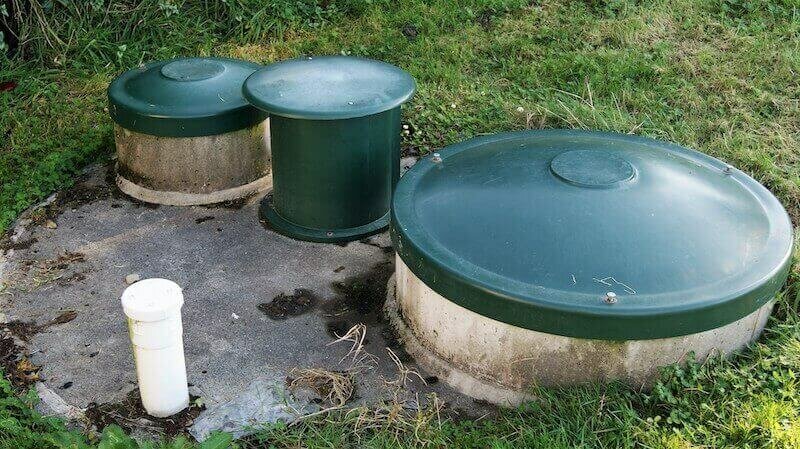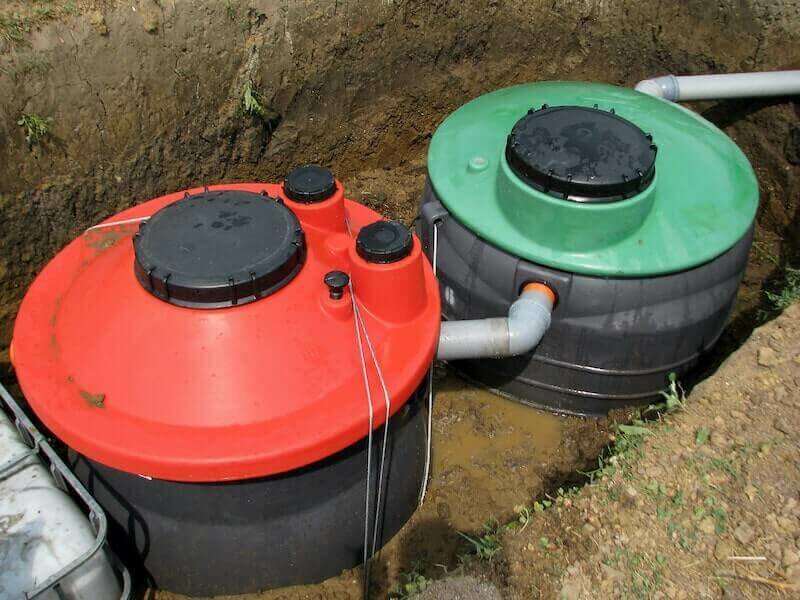Septic tank installation isn’t necessarily the first thing a homeowner wants to deal with, and sellers certainly don’t want to spend the money on a septic system before a sale.
But, if you’re looking to save money on installation costs, some of the cheapest ways to sell a house include being savvy about infrastructure and having home improvement skills, so you should understand how the average cost of a septic system could potentially add to your expenses and alter your timeline.
If that leaves you with questions about what to do in your home and the costs of adding a septic system, keep reading to understand everything you need to know so that you can make the right septic system decisions.

Homes Need Septic Tanks
Every house needs to have a way to handle liquid waste and solid waste that goes down the toilets and drains to the sewer line. If you live in a rural area without public sewage, that likely means you’ll need a septic tank system. Even if your home already has some type of septic tank system, you need to maintain it properly to prevent clogs and extend its lifespan.
Understanding a bit about how a conventional septic system works and what’s required to have one is a must. Learning about DIY maintenance on your type of septic system, required building permits for a new septic system, your septic tank size, soil conditions, and your warranty can be helpful to install or maintain an existing system.
Local municipalities typically have codes or laws that govern replacements, new septic tank installations, and maintenance of septic systems. A septic tank isn’t usually that complicated, but when they are not functioning correctly, the consequences can be harmful to you and your property, as well as your neighbors and their land.
Not only can this result in the high replacement cost of a new septic system, but it can also come with high labor costs. However, if you maintain your septic system, it is exceptionally environmentally friendly.
It’s pretty likely a local or state requirement that you must have your septic tank inspected before you can transfer the home’s title in the event of a sale. And even if it’s not legally required, it makes good practical sense to do so.
Septic tanks need routine pumping and maintenance to remove the solid waste collected at the bottom. You’ll also want to keep records of your services, the original installation or replacement of the tank, and any other major maintenance. Septic tanks should last for decades, but they will eventually need replacement.
Finding the Right Sized Septic Tank for Your Home
A septic system needs to be the right size for your home and its occupants. One of the best ways to get a feel for the general size of your system is to count the number of bedrooms and bathrooms in your house. A 3-bedroom home with multiple bathrooms will generate more sewage to deal with than a small 1-bedroom house and bathroom.
It’s essential that your tank can handle all your home’s wastewater. If the tank is sized too small and becomes overwhelmed, the effluent will escape the tank before it’s broken down. You’ll be left with a dirty mess of blockages, overflowing or flooding wastewater, and the odor of decomposing human waste.
If the tank is too big for your home, the sludge and solid waste will just sit in the tank, as there will be a lack of liquid wastewater to produce the needed bacteria that break down sludge and carries it to the leach field. Typically, a 3-bedroom home would require a 1,000-gallon tank.
Large septic tanks can have a capacity of 1500 gallons or more, and small tanks might be only 750 gallons. Here is another place where you must be mindful of local building codes, as your area may have a minimum septic tank volume. You can also gauge the size of the tank by considering the amount of wastewater you’ll generate from each occupant, the number of sinks that might be used, and the frequency of using appliances like dish and clothing washers.
Different Types of Septic Tanks
There are many different kinds of septic tanks and systems as well as tank materials. Right off the bat, you have to decide between an anaerobic septic system or an aerobic design. They have some general differences. Anaerobic tanks don’t use oxygen, are less expensive, and are the traditional go-to. Aerobic septic systems are more complicated, more expensive, and the newer alternative.
You should understand the difference between the two in terms of their specific features as well.
Anaerobic Systems
- Less expensive, but less efficient
- Need large leach fields
- A pipe carries effluent from the home to a tank
- Anaerobic bacteria break down waste in the tank
- A separate set of pipes let the wastewater drain out of the tank into the fields
Aerobic Systems
- More expensive, more efficient
- Smaller drain fields are possible
- A pipe carries effluent from the home to a tank
- Aerobic bacteria break down waste in the tank faster than conventional systems
- Require electricity, circulation, and aeration
- Separate additional tanks may be necessary
Once you decide on an anaerobic or aerobic design, you can consider the materials such as fiberglass septic tanks, concrete septic tanks, plastic septic tanks, or steel tanks.
Chambered Systems
A multi-chamber system is a common alternative to the traditional gravel system. Instead of being buried in gravel, the chamber or chambers are set into and surrounded by soil. They’re easy to deliver to a job site and relatively quick to construct. They are an excellent choice for homes with a high water table.
Wetland Systems
This type of system takes advantage of the natural treatment power of wetlands to break down waste. Water from a septic tank flows to a constructed wetland cell, passing slowly through sand and gravel inside a concrete or PVC-lined vault. On top, wetland plantings that thrive in saturated environments or groundwater work with the treatment media to break down and remove pathogens and nutrients.
Evaporation or Evapotranspiration Systems
This option is an ideal system in very dry areas but is susceptible to failure in heavy rains or snowfalls. Effluent from the septic tank enters an open drain field, where it evaporates into the air, and the wastewater never permeates the soil or the water table.
Drip Septic Systems
Drip systems send their wastewater into a field of tubing with tiny perforations. The tubing is just under the top layer of soil, only a few inches deep. Between the septic tank and the tubing, a separate pump tank periodically pushes the wastewater out to the tubes, where it circulates and drips into the absorption area. Drip septic is a versatile system, but the average price is more costly to build and maintain as it requires electrical power, an air purge valve, and more components.
Sand Filter Septic System
Sand systems use a pump to transfer effluent into an impermeable sand filter box. Inside, the wastewater passes through sand, which offers natural filtration. Then, the treated wastewater at the bottom of the filter pumps out to the discharge or leach field. This septic system cost is more expensive than most but is a good approach in areas with high water tables or on sites near bodies of water.

The Cost of Installing a Septic Tank
Like many things, when it comes to a new system, simple is cheaper. So, conventional anaerobic systems are decidedly less expensive than more complex alternative systems and aerobic designs.
Actual costs can vary quite a bit based on where you live, what your property is like, and how complicated the system is. As a general guide, consider these costs for various types of systems. Remember that installing or repairing a tank can also be on the list for ways to increase a home’s value in a sale.
For an overview of the cost of installing a septic tank, consider factors that could make the job more complicated and expensive. Things like difficult access, rugged terrain, potential damage to other infrastructure (like irrigation, plumbing, or electrical lines), and whether you’ll need a specialized system due to a high water table in the area.
As a very general rule of thumb, you should expect a conventional septic tank installation to cost from $2,000-$5,000.
Be sure to check your tank prior to a new install. Chances are, there may be an easier fix such as a tank pump or baffle replacement. Having a plumber or specialist pinpoint the problem may end up saving you money in the long run.
Septic Tank Costs
To get a little more precise with your estimate for installing septic tank costs, let’s break down the expense by the different types of septic system installations.
- Conventional anaerobic septic tank: $3,000 to $6,000
- Chambered septic tank: $1,800 – $6,000
- Mound septic system: $12,000 – $24,000
- Gravity-fed septic: $2,400 – $6,000
- Aerobic Septic: $12,000 – $24,000
As you can see, there is a lot of variability in the total cost of a septic system. If you’re putting in a septic tank because you’re trying to sell your house and you’re not sure what to do, you might want to contact cash home buyers in Salem or other New Hampshire areas.
There are plenty of companies that buy houses in Bedford – like us! We’re not qualified to build a system for you, but we can help you understand the value of your home with or without a septic tank.
Conclusion
At this point, you should understand that the size of your home, the number of people using the toilets, washing machines, and sinks, and the area you live in determine the best septic solution for your particular needs. Pricing varies considerably based on the scale of your project, the type of installation, and your local building codes.
If you are considering selling or purchasing a home with a septic system, don’t forget we buy houses in New Hampshire! We can help you close a deal today!
